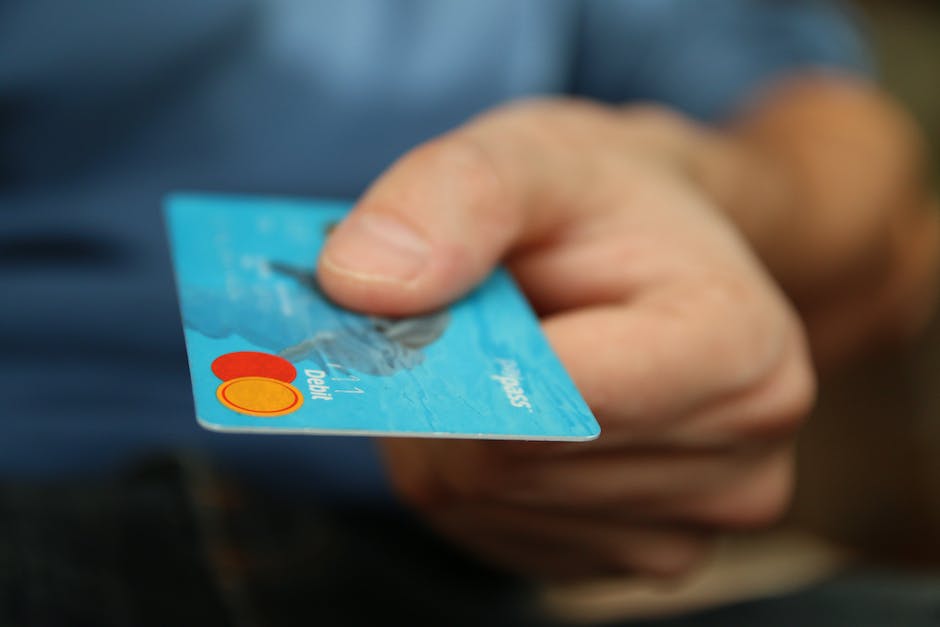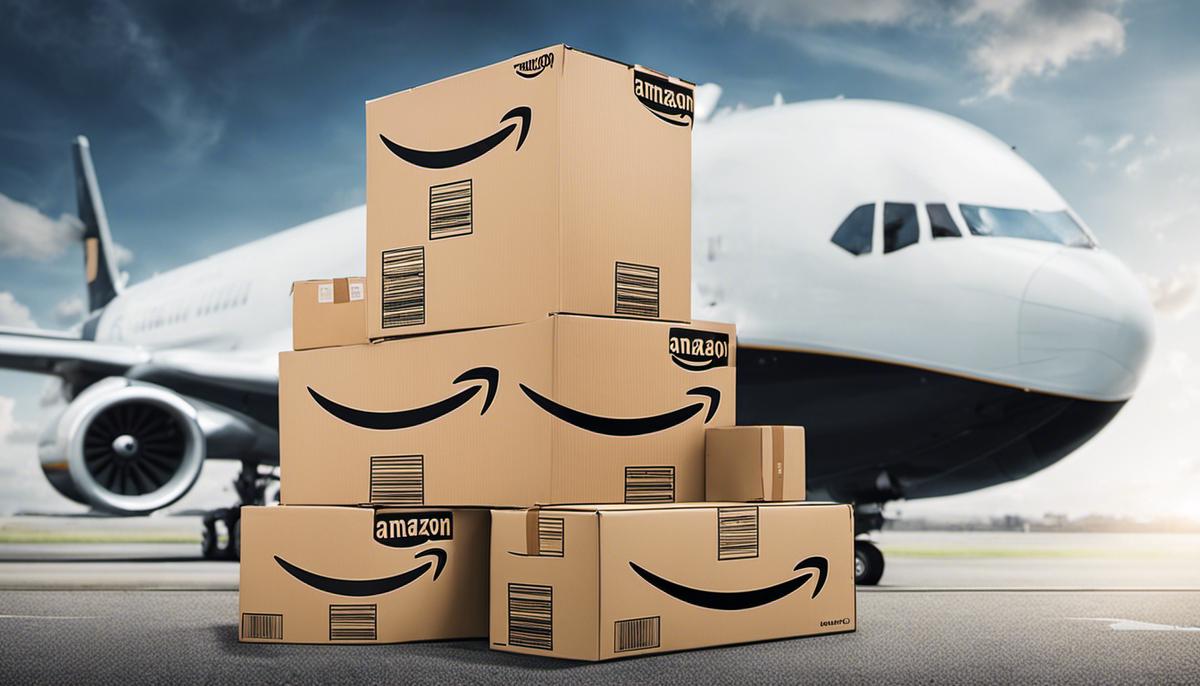BetterYouJourney.com is a participant in the Amazon Services LLC Some of the links in our posts are affiliate links. Click here to see full Disclosure.
In the digital age, capitalizing on sprawling e-commerce platforms like Amazon can pave the way for a steady stream of passive income. From affiliate marketing to selling private label products, Amazon’s multifaceted platform offers a myriad of opportunities for those interested in developing a side hustle or thriving business. This comprehensive dive into Amazon-based passive income strategies aims to shed light on the potential that lies within this e-commerce giant. Master the ins and outs of different programs such as Kindle Direct Publishing (KDP), Fulfilled-by-Amazon (FBA), Amazon Handmade, and Merch by Amazon to unlock unprecedented avenues of income generation.
Understanding Amazon Affiliate Marketing
Amazon Affiliate Marketing Overview
Amazon Affiliate Marketing is a prominent passive income strategy that involves promoting and referring Amazon products. Amazon provides unique affiliate links associated with your account. When people click through these links and make a purchase, you earn a commission. This can be particularly beneficial as the range of products available on Amazon’s vast online marketplace is vast, encompassing nearly every category imaginable.
The Process of Amazon Affiliate Marketing
Firstly, a participant must sign up for Amazon’s affiliate program known as Amazon Associates. After the successful completion of the application process, the participant is given unique affiliate links tied to their account. These links can be embedded in a blog post, a social media update, or an email. When an individual clicks through these links and buys a product, the affiliate marketer earns a commission on the sale.
Advantages of Amazon Affiliate Marketing
Several advantages make Amazon Affiliate Marketing a lucrative mode of passive income. The first advantage lies in Amazon’s vast product range, allowing associates to choose from various items to promote. This diversity gives One the liberty to choose products related to their niche, making it easier to incorporate the referral links naturally into their content.
Amazon’s widely recognized and trusted brand also helps drive conversions. Customers are more likely to make a purchase from a brand they acknowledge and trust, which benefits associates.
Amazon’s user-friendly affiliate dashboard tracks clicks and earnings, making it easy for associates to monitor their progress and adjust their strategy as needed. The Amazon cookie, valid for 24 hours, means that an associate will earn a commission on any purchases made by a user who has clicked on the link, not just the linked product.
Potential Downsides of Amazon Affiliate Marketing
Despite its numerous advantages, Amazon Affiliate Marketing does have potential downsides. The commission rates are relatively low compared to some other affiliate programs – generally between 1% and 10% of the item’s price. However, the rate can vary based on the product category and the total number of products sold.
Affiliates also need to generate a minimum amount of referral income before they can cash out their earnings. This threshold might seem high, especially for those new to affiliate marketing.
Amazon Affiliate Marketing as a Passive Income Strategy
Amazon Affiliate Marketing’s primary advantage as a passive income strategy is its potential for scalability. Once the groundwork of creating the affiliate links and incorporating them into various content sources is done, dependent on the traffic your platform attracts, the earning potential can be substantial.
A successful affiliate marketer can generate income around the clock with minimal ongoing effort, making Amazon Affiliate Marketing a passive income ideal. While it does require time and effort to establish, the potential rewards make it a popular choice for those seeking to generate passive income.
Grasping the concept, benefits, and possible challenges of Amazon Affiliate Marketing is crucial in effectively utilizing it to establish a consistent flow of passive income. This tool lets you harness the power of Amazon’s vast array of products, stellar brand reputation, and straightforward affiliate program to monetize your platform and generate passive income.

Selling Private Label Products on Amazon
Realizing the Potential of Private Label Products on Amazon
An approach many entrepreneurs adopt for passive income generation is selling private label products on Amazon. “Private label” indicates the act of producing generic items, which are then branded and sold under a personalized label. In the usual process, the entrepreneur collaborates with a supplier who builds the product as per the provided specifications. Post production, the entrepreneur has the opportunity to list and sell the product on Amazon under their unique brand identity.
Steps to Start Selling Private Label Products
To start selling private label products on Amazon, the first step is to create an Amazon seller account. Once the account is set up, the next step is to identify a product that you want to sell. This requires intensive product research to identify popular, high-margin items that have low competition. After identifying a potential product, the process of finding a reliable manufacturer or supplier comes in. This could be a local producer or an overseas manufacturer, often from countries like China.
The next step is to design your brand. This includes creating a logo, product packaging, and an appealing product listing on Amazon. Once your product is manufactured and branded, you can ship it to Amazon’s fulfillment centers. Through Amazon’s Fulfillment by Amazon (FBA) program, Amazon will store your products in their warehouses, pack and ship them to customers, handle returns, and provide customer service on your behalf.
Potential Profit and Success on Amazon
The potential for profit when selling private label products on Amazon is substantial. Amazon is known for its vast customer base, providing a wide pool of potential customers for your products. The actual profit margins can vary significantly depending on the product, its price, the cost of manufacturing, and other expenses associated with running a business. Nonetheless, it is possible to achieve profit margins anywhere from 10% to 100% or more.
The key to leveraging Amazon’s marketplace successfully lies in selecting the right product, executing a strategic marketing plan, and providing excellent customer service. Promoting your products using the appropriate keywords and optimizing your product listings to rank higher in Amazon’s search results can also increase visibility and sales.
Choosing the Right Product and Establishing Your Brand
Selecting the right product for your private label is a critical component when it comes to generating success on Amazon. It would help if you looked for items that showcase a high demand coupled with low competition. Also, consider selecting lightweight and easily shipped products that can provide a considerable markup.
After product selection, the next step is to form a captivating brand. The brand’s name, logo, design of the product packing, and overall branding should align with your target demographic, distinguishing you from your competitors. All aspects of marketing, product listings, and social media platforms must have a consistent branding approach, further highlighting a strong brand identity. It’s also essential that your branding highlights the unique value of your product, which could be the factor to sway potential customers your way as opposed to your competition.

Utilizing Amazon Fulfilled-by-Amazon (FBA) Program
Utilizing Amazon’s Fulfilled-by-Amazon (FBA) Program
The Amazon Fulfilled-by-Amazon program, often shortened to Amazon FBA, is a robust service provided by the ecommerce behemoth. This service allows sellers to store their products in Amazon’s fulfillment centers, where Amazon then assumes responsibility for the product’s storage, packing, and shipping needs.
In essence, the FBA program lifts the burden from the sellers by handling the nitty-gritty of product storage and delivery. Sellers are only required to ensure that their product inventory is well-stocked at Amazon’s warehouses. Once an order is placed by a customer, Amazon takes over, managing the picking, packing, and shipping on the seller’s behalf.
By using this approach, sellers can leverage Amazon’s highly efficient logistics and vast network, thus broadening their customer reach, enhancing product visibility, and expediting delivery times. The advantages of the FBA program translate to freeing up more time for sellers to focus on procuring products, marketing strategies, and business expansion.
The Benefits of Amazon FBA
Selling via Amazon FBA offers several significant advantages. The most notable benefit is the convenience it offers. Amazon handles all the time-consuming tasks such as storage, packaging, shipping, customer service, and even returns.
Moreover, products stored at Amazon’s fulfillment centers become eligible for Amazon Prime’s free two-day shipping, which is a significant factor that influences Amazon customers to choose an Amazon FBA seller. Also, Amazon takes complete responsibility for any goods damaged in their warehouses or during transportation to customers.
FBA sellers are also more likely to win the Amazon Buy Box— the section on the right side of the Amazon product detail page, where customers can start purchasing by adding items to their shopping carts, which is another driving force for increased sales.
The Costs of Amazon FBA
While Amazon FBA can indeed be a lucrative business opportunity, it does come with its costs. While joining the program itself is free, sellers are required to pay for storage space and the orders Amazon fulfills. The fee depends on the time of the year, the size, and the weight of the products.
During January to September, the storage fee is 75 cents per cubic foot for standard-sized items and 48 cents per cubic foot for oversized items. Between October to December, when storage space is in high demand, the fees go up to $2.40 and $1.20 per cubic foot, for standard and oversized items, respectively.
Order fulfillment costs range between $2.50 to $5.42 for items weighing less than 3 lb and increase as the weight and dimensions of the packaged item increase.
Generating Passive Income through Amazon FBA
Amazon FBA has emerged as a profitable passive income option due to its potential for impressive returns and scalability. The FBA program allows one to tap into Amazon’s extensive customer base and robust logistics system, establishing a sturdy platform for any online retail venture.
By identifying products with high demand and low competition, and by incorporating effective pricing and promotional strategies, sellers can reap substantial profits which can multiply as the business grows. As Amazon handles operations, sellers can maintain and expand their ventures in conjunction with their regular employment or other engagements, making FBA an enticing passive income source. However, for success, it calls for investment, planning, perseverance, and patience just like any other business.

Exploring Amazon Kindle Direct Publishing (KDP)
Monetizing Your Writing Skills with Amazon Kindle Direct Publishing (KDP)
Amazon KDP represents an innovative platform for aspiring authors who wish to self-publish their eBooks and paperback books. It’s a passive income source that welcomes anyone with a passion for writing. In contrast to traditional publishing, KDP lets authors exercise comprehensive control over their publications, including pricing and revisions, enabling changes at any given point in time.
Guide to Publishing an eBook on Amazon KDP
To start your journey as a self-published author on Amazon KDP, first, sign up for a free account on the Amazon KDP website. After registering, click on the “Create a Kindle eBook” button to start the publishing process. The following step involves listing details including title, subtitle, description, keywords, and choosing relevant categories for your book. It is crucial to spend time crafting an enticing book description and carry out keyword research to ensure your book appears in relevant searches.
The next step is to upload your manuscript and book cover. KDP accepts manuscripts in several formats including Word, ePub, and HTML, while the book cover can be uploaded as a JPEG or TIFF file. After uploading, KDP provides an online viewer to check how your eBook would appear on different devices.
Finally, decide on the pricing and royalty options that best suit your strategy. Amazon offers two royalty options: 35% and 70%. If you price your book between $2.99 and $9.99, you are eligible for the 70% royalty option. For books priced outside of this range, you will receive a 35% royalty.
Strategies to Attract KDP Readers
Marketing your eBook is fundamental to attracting readers. Start by leveraging social media platforms, blogs, or websites to publicize your book. You can also join relevant online groups or forums and participate in discussions to subtly promote your book.
Consider enrolling your book in the KDP Select program, which makes your book exclusive to Amazon for a period of 90 days and gets your book included in the Kindle Owners’ Lending Library and Kindle Unlimited. With this, you are paid each time someone reads your book.
Running promotional offers is another effective strategy to increase visibility and gain readership. For instance, you can reduce the price of your book or offer it for free for a few days to encourage downloads and get reviews.
Expected Income from Amazon’s Kindle Direct Publishing (KDP)
Using Amazon’s Kindle Direct Publishing (KDP), earnings can range widely and are influenced by numerous factors. These can include the genre of the book, the retail price, promotion strategies, the volume of books published and more. Typically, self-publishing authors may earn royalties ranging from 35% to 70% per book sold. The accumulated income also relies on consistent book sales, positioning KDP as a sustainable source of passive income.
It’s important to note that establishing a full-time income through KDP may require substantial effort, particularly in the initial phases. Be ready to market your book consistently, reply to reader reviews, refresh your book if required, and write additional books to increase your revenue.

Mastering Amazon Handmade and Merch by Amazon
Exploring Passive Income Possibilities with Amazon Handmade
Amazon Handmade is an exclusive section within Amazon’s marketplace for crafters to market handmade items. This platform is designed to create personalized customer experiences for those seeking distinctive, artisanal goods, offering makers the prospect of transforming their craft into a passive income source.
The first step towards successfully generating passive income through Amazon Handmade is to identify the type of handmade products you plan to sell. Categories on Amazon Handmade are extensive and include Jewelry, Home Décor, Beauty & Personal Care, Pet Supplies, and more. Choose a category that aligns with your crafts.
The subsequent step involves setting up your Amazon Handmade Store. This process involves a simplistic approval process to join the Amazon Handmade community. You will be required to provide information about your products, your crafting process, and your business, reassuring Amazon that your products are indeed handmade.
Potential Profitability of Amazon Handmade
Amazon Handmade can be a highly profitable platform if navigated correctly. It focuses on creating a connection between customers and artisans, emphasizing on the stories behind the product. This adds a personal touch, making it more appealing to customers willing to pay a higher price for unique, one-of-a-kind items.
To maximize the profitability, it’s crucial to price your products correctly, taking into account the cost of the materials, your time, and the commission fee Amazon takes for each sale (which is generally around 15%). High-quality photos and detailed product descriptions will also help to attract customers and increase sales.
Merch by Amazon: An Alternative Passive Income Strategy
Merch by Amazon is another potential stream of passive income. This platform allows you to sell your designs on Amazon’s product offerings, most notably t-shirts. You simply upload your designs, choose the product type and color, set your price, and Amazon handles the rest – production, shipping, and customer service.
Steps to Success with Merch by Amazon
To succeed with Merch by Amazon, the first step is to create an account. The approval process can take a few weeks, and once approved, you can start uploading your designs.
Focus on creating designs that appeal to a broad audience or target a specific niche market. Keep track of trending topics to pivot your designs swiftly and accordingly. Since you don’t have any inventory to manage, it allows you to experiment with a broad range of designs and styles to see what sells best.
Remember, quality of the design is key. Higher the quality and uniqueness of your designs, more likely they are to sell. Research keywords related to your design topics and include them in your product descriptions to optimize search engine visibility.
In terms of profitability, Amazon charges a cost per product, so ensure your pricing strategy leaves room for a reasonable profit after Amazon’s fees are extracted. Also, bear in mind that royalty rates are influenced by the list price, region, and product category.
Both Amazon Handmade and Merch by Amazon present substantial opportunities for creating passive income. Both platforms provide the necessary tools and customer base; success mainly lies in fine-tuning your strategy and delivering high-quality products or designs.

Each of the Amazon-based income strategies discussed: affiliate marketing, private label products selling, utilizing Amazon FBA, Kindle Direct Publishing, Amazon Handmade and Merch by Amazon, are unique opportunities tailored to different skill sets and interests. In a digitally-focused world where the internet offers endless avenues of income, these strategies leverage the power and popularity of the Amazon Marketplace. These varied programs empower individuals to become successful entrepreneurs by utilizing the resources provided by the largest e-commerce platform in the world. Harnessing the potential of these strategies can ultimately unlock prosperous passive income streams and, in doing so, rewrite personal narratives in the realm of financial growth and stability.








